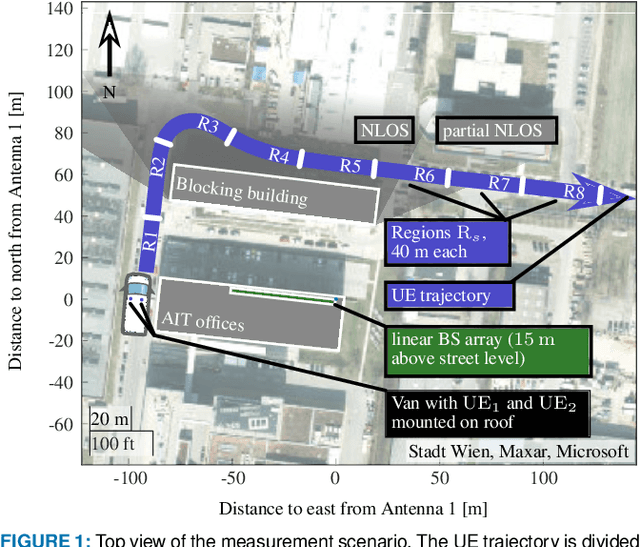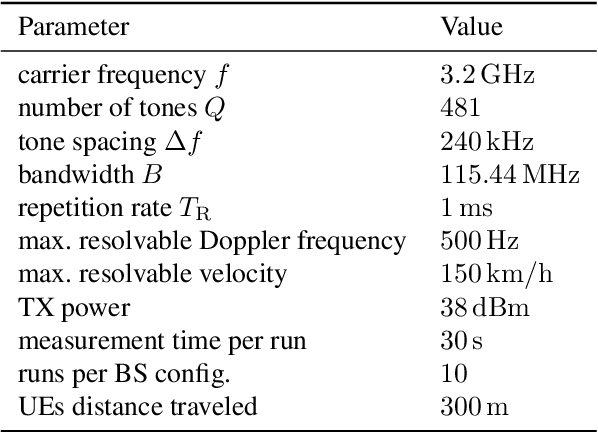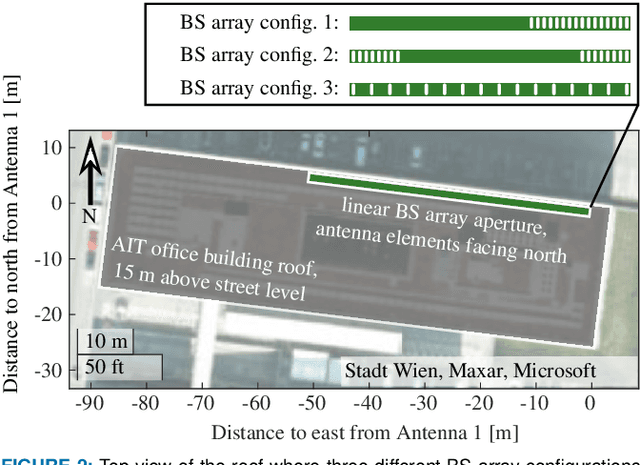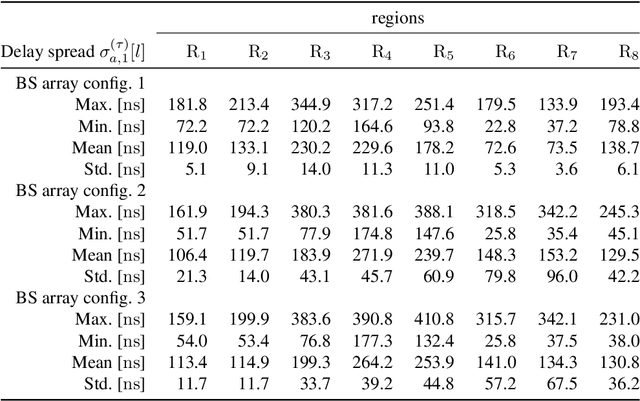Towards Cell-Free Massive MIMO: A Measurement-Based Analysis
Paper and Code
Jul 04, 2022



Cell-free widely distributed massive multiple-input multiple-output (MIMO) systems utilize radio units spread out over a large geographical area. The radio signal of a user equipment (UE) is coherently detected by a subset of radio units (RUs) in the vicinity of the UE and processed jointly at the nearest baseband processing unit (BPU). This architecture promises two orders of magnitude less transmit power, spatial focusing at the UE position for high reliability, and consistent throughput over the coverage area. All these properties have been investigated so far from a theoretical point of view. To the best of our knowledge, this work presents the first empirical radio wave propagation measurements in the form of time-variant channel transfer functions for a linear, widely distributed antenna array with 32 single antenna RUs spread out over a range of 46.5 m. The large aperture allows for valuable insights into the propagation characteristics of cell-free systems. Three different co-located and widely distributed RU configurations and their properties in an urban environment are analyzed in terms of time-variant delay-spread, Doppler spread, path loss and the correlation of the local scattering function over space. For the development of 6G cell-free massive MIMO transceiver algorithms, we analyze properties such as channel hardening, channel aging as well as the signal to interference and noise ratio (SINR). Our empirical evidence supports the promising claims for widely distributed cell-free systems.
 Add to Chrome
Add to Chrome Add to Firefox
Add to Firefox Add to Edge
Add to Edge